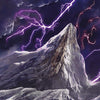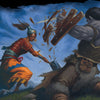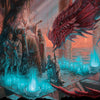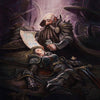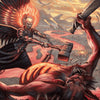15 Terrible D&D Monster Creation Mistakes
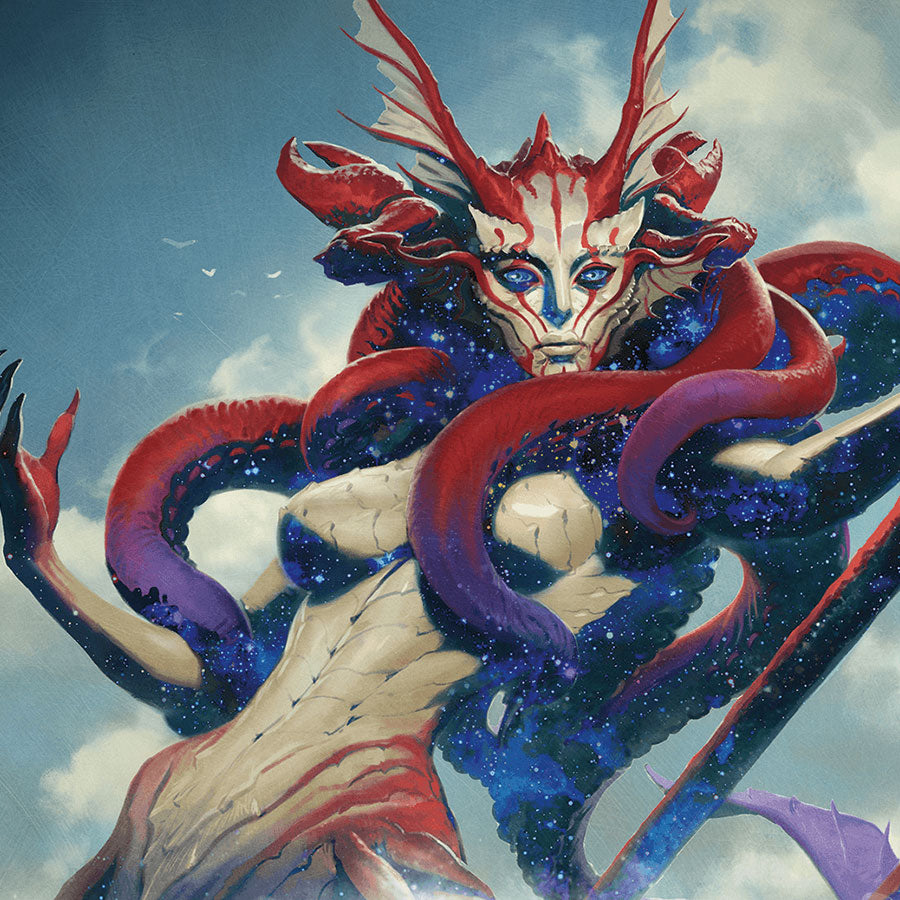
Written by Luke Hart
Let's face it, sometimes no matter how many monster books you flip through, you just can't find exactly what you're looking for. And that brings you into the wonderful realm of homebrewery because you can make exactly what you're looking for. That perfect monster that will inspire your next game session and bring a sinking feeling of dread and terror to your players. Because that's what it's all about, isn't it? Scaring the life out of our players’ characters with claws and teeth, weapons and spells.
Today we’re talking about 15 monster creation mistakes that you should avoid. Homebrewing your own monsters can be tons of fun, but it is filled with pitfalls.
Watch or listen to this article by clicking the video below.
#1 Half-Baking the Concept
A good monster starts with a good concept. And a good concept requires inspiration. If you're not inspired to create something new and amazing, then you're probably better off just grabbing something out of a book. But once you're inspired you want to create a strong concept for the monster. Get an idea of what the monster looks like, where it lives, the terrain it prefers, the lore that might be around it, or a cool spell or ability that defines the monster. Aim for something unique that fills a hole in the monster ecosystem.
#2 Skimping on the Appearance
One of the things that inspires me the most to create D&D adventures and run games in general is seeing cool monster artwork that inspires me to want to use said monster in an adventure. I then go on to write an adventure or two that features this monster or group of monsters. Considering how much the visuals of a monster can get us amped up, it's critical that the appearance of your monster be carefully considered.
Now you might have a good idea of what it looks like right out of the gate, but if you don't then I suggest going online and browsing through the thousands of monster artwork that can be found on different sites Where artists upload their work. This will serve to inspire you and give you ideas for what your monster might look like.
And then you might sketch out your monster to the best of your ability, or write some read aloud text that can be used at the table. Either way, you want to be able to communicate your monsters appearance to your characters so that it might inspire them as much as it does you.
#3 Not Considering the Environment
Every creature, every monster lives somewhere. And oftentimes they tend to live in environments where they are especially suited to survive and adapted to. And many times these adaptations play into the monsters appearance and abilities. If you want to build verisimilitude into your monster design, i suggest researching real world creatures and the unique environments they live in. This will allow you to see how actual creatures adapt to their environments, and how their environments are reflected in themselves. And if you're going to have a creature that hasn't ability that is contrary to its environment, make sure you have a reason for why. And I suggest avoiding the cliched justification of “ohh it's just magic.” There's only so much you can play that card before suspension of disbelief is totally shattered.
#4 Ignoring the Lore
Even if your players characters may never learn the lore of a monster, it is extremely useful to develop it nonetheless, even if it's just a few sentences. You see knowing the lore of a monster helps you the game master role play that monster when your players characters encounter it. A monster's lore can also affect other parts of the game that happened behind the scenes. However, some players love lore, and love learning about monsters. And in some game systems there are mechanics built in that players can use to learn about monster lore, such as Recall Knowledge in Pathfinder 2. So if you never consider a monster's lore, you'll be shortchanging your gameplay.
#5 Not Understanding the Mechanics
I feel like this is a captain obvious moment, and it really should go without saying, but I feel like I have to say it. If you don't understand the mechanics of the game system you are using insomuch as they relate to monster design, you're probably going to be hard pressed to design a good monster—at least from a mechanical point of view. You can come up with an amazing concept, appearance, and lore; but the stat block, the mechanics of your monster are going to suffer greatly. Your system's game master guide should have a chapter that discusses how to homebrew monsters. I know that D&D does, and Pathfinder 2 does as well. I feel like it's a basic part of gain master instructions, so most systems really should have it. It's really just on you to crack that book open and study up. Furthermore there are many online tools for creating monster stat blocks.
#6 Short-Changing Special Abilities
A monster that only slashes with its claws or hacks with its sword or does something else fairly mundane, and has no special abilities or spellcasting or anything like that, is a monster that you should probably have never created in the first place. Because there are already so many boring monsters like that in the books. If you're going to take the time to homebrew a monster, make sure that it has something really cool that it can do. And this should be a special ability that it can use during an encounter with the characters, probably during combat if your games tend to feature a decent amount of combat. The fact is that most monsters exist to be encountered by players, and many groups tend to fight these monsters that they encounter. So make sure your monster has something unique and awesome that it can do in battle.
And whatever special ability that you give your monster, it should be something that will challenge the characters. However it should not be something that was chosen specifically to negate a characters abilities. I've heard of game masters doing this sort of thing, and not only is it probably very unsatisfying to players, but it also feels like it's a bit mean spirited. It's like ah ha your wizard can do this really cool thing, but my monster can shut you down so now you suck!
Also make sure that your monstrous special abilities make sense according to the environment that it lives in, the special adaptations that it might has, or skills that it may have acquired, if it is an intelligent creature.
#7 Ignoring Balance
Most game systems have guidelines around creating balance. That is they will help you mechanically design a monster that is balanced for characters of a certain level. Do not ignore this. If you come in hot with a monster that is far too difficult, characters we'll feel totally helpless against it. Or if you come in too weak, there will be no challenge for them. Now of course, there is always a time and a place 4 characters encountering a monster that is absolutely more powerful than they are, and they have no chance of defeating it. And a beautiful steamroll where characters trounce a group of monsters with no effort at all can be amazing fun from time to time.
The point that I'm trying to make is this: understand how to create balanced monsters in your game system, in design your monsters intentionally. Don't just throw together a stat block Willy nilly and hope for the best. Know the mechanics, and know what you're aiming to achieve.
That said, the monster game design mechanics for some systems can be very complex. So a simple trick to help you double check your work and make sure that you are in the ballpark, is to compare your monster with an out-of-the-box monster of the same level. This will allow you to make sure your monster is in the general neighborhood of where it should be.
#8 Not Justifying Movement
OK so your monster can Burrow underground, but when I look at it I see a bulky creature without nails. Or you say that your monster could fly, but it has no wings and is not a magical creature. Yeah this is probably another captain obvious moment, but your monsters movement needs to make sense according to its form and size. A creature that doesn't live anywhere near water probably doesn't have a swim speed. Flying creatures and need to have wings or some other feature that allows flight. Creatures with borough speeds tend to be warm like, or at least streamlined, and have claws. Also consider speed. Creatures without legs or Unintelligent creatures such as undead and oozes tend to move slower than average. Faster creatures tend to be smaller or have longer legs.
But more than just making movement makes sense, consider ways that you can use a creatures movement to make the game more interesting. Moving without provoking attacks of opportunity. Blinking in and out of existence So that it is harder to hit or target with spells. Skating along the ground on a cushion of air to avoid difficult terrain. Walking on water. Just make sure that whatever your monster can do makes sense according to its terrain or ecology; its movement needs to be justified.
#9 Not Considering Offense vs Defense
It might be a temptation to consider offense and defense on their own as though they are separate entities. However they both work together and should be balanced in relationship to each other. A monster that has exceptional offensive capabilities should probably have weaker defense. This is your proverbial glass cannon. Monsters whose defenses are very high, armor class and hit points, should have less effective offensive capabilities. These are your tanks. Or you might have monsters that are balanced among both offense and defense. But the point is that there must be an intentional design consideration that balances offense and defense relative to each other in one way or another.
Furthermore monsters that have exceptional defenses should still have a way to overcome those defenses. This presents a puzzle for the players during a combat, a challenge for them to overcome. And in the same vein monsters that have good offense, should also present a way for intelligent characters to mitigate some of that offense.
Now whether you go the route of building for defense or offense should really depend on the style of combat that you're table enjoys the most. If you prioritize offense, then you're more likely to have fast-paced combats there are over fairly quickly. If you prioritize defense, then you're more likely to have longer combats that are drawn out and take up more table time. My personal opinion, there are few advantages to having longer combats. I would always trend toward prioritizing offense over defense and aiming for shorter, fast-paced combats. Even if your group really likes combats, that doesn't mean that each combat should be longer. You can have shorter combats and justice have more combats in your game session.
#10 Nonsensical Ability Scores and Skills
There is a cliche that I read all the time in books, that is, quite frankly, starting to get annoying. It's when the author describes a character as agile for his size. So basically you have a fat or bulky warrior who is extremely dexterous. And OK, that might be a thing from time to time, but it seems way overused.
Now the way this translates to your monster design, is that your monster's ability scores—their strength, dexterity, wisdom, intelligence—should make sense for the monster size, form, and function. Massive creatures are rarely fast but they're usually strong and they're probably not very stealthy. Ask your local paladin; they can tell you. And smaller creatures tend to be more agile and physically weaker with less stamina or constitution. Yes we're looking at you halfling. A monster's intelligence should reflect its ability to reason, and wisdom shows a creatures survival instincts. Creatures that don't talk and behave instinctively tend to have lower charisma than those that can communicate.
Furthermore, skills should make sense for the creature! A melee monster will be trained in athletics, and a troll who has learned spellcasting will be trained in arcana. I definitely suggest that you give your monsters skills that they can use either in or out of combat, depending upon how you plan to integrate the monster into your game. However don't bother giving them skills that they'll probably never use.
#11 Building Only for Power
Dragons are powerful creatures in dungeons and Dragons, but they are also very interesting. They have a mix of abilities that provide different threats and defenses that make players think. Their breath weapon is a heavy hitter, but smart players can find spells and items that mitigate some of that power. The breath weapon is also limited resource they can't be used every round. The ability to fly makes them very dangerous to fight at low levels, forcing players to be creative. Dragons also have a lot of hit points and high armor class. Their epic monsters and everyone recognizes the danger of a dragon. However they are not just powerful; They are also interesting.
The trap when making a monster is to only build it for power, when you should instead be prioritizing making your monster interesting and fun to run at the game table.
#12 Over Buffing Defense
When you go crazy on a monster's defense, you run the risk of turning your combats into slogs. So, a good monster with high defense should be a challenge to take down, but it should not be completely invulnerable. If the monster is hard to hit, it should have fewer hit points, unless you plan on running a six hour combat. If the master has a lot of resistances or immunities, It should be easier to hit and have lower hip points. Or it should have a weakness that the characters can find and exploit, and one that is not beyond their reach. For instance if you know none of your players characters can deal cold damage, giving a monster a weakness to cold Is it really going to offset anything.
Also consider that active defenses are more interesting than passive defenses. A monster with a high armor class that is hard to hit is far less interesting than one with regeneration that the players must figure out how to overcome.
#13 Making Attacks Boring
If you're a player and all you can do with your character is swing your sword or cast the same cantrip over and over again, you're probably in for a very boring game session. And if all your monsters can do it slashed with their claws or swing their big axes, both you the game master and your players are in for a boring game session. Monsters with special abilities are more fun to run and more fun to fight against. And don't overlook battlefield control. Wall spells, the ability to create difficult terrain, abilities that move the enemy around against their will, and the light can all be interesting and fun challenges for players.
By the way, this is one of the reasons that I hate counterspells so much. It makes the game less interesting. Instead of having monsters and players who can cast spells they just get shut down. Their special abilities are negated. And then we are back to slashing with claws or swinging big axes.
#14 Not Reskinning
I feel like there is a tendency to believe that creating a monster from scratch is the best way to go. However, there are tons of existing monsters out there, and the chances are that one of them resembles very closely the homebrew monster that you are conceptualizing. So, wouldn't it be much easier to start with that monster and its stat block and then change it as needed to accommodate what you have in mind? If you want a burrowing desert creature that deals acid damage, start with a remorhaz. Replace its cold immunity with acid immunity, and replace its fire damage with acid damage. Boom, you're done!
#15 Overdoing It
One of my biggest gripes against high level monsters in dungeons and Dragons, especially legendary ones, is that their stat blocks span pages. Like how in the world am I possibly supposed to run that at the game table? It might be really cool to read and visualize and think about, but it's not practical. So, be careful not to give a monster so many cool abilities that it becomes unmanageable and unplayable at the game table. And this especially holds true for spellcasters. They don't need 5 cantrips, 5 level 1 spells, 5 level 2 spells, four level 3 spells, four level 4 spells, and three level 5 spells. You will never use all those spells! Instead pick a handful of spells that you think will actually get used.
Get Loads of 5e Adventures and Resources for Your Games!
As a new dungeon master, I was overwhelmed with everything I needed to do. Learn the rules, create the adventures, run the game, handle problem players—it was A LOT! And even as a veteran DM, it’s still a lot. You might even feel that way yourself.
If you’re looking for loads of 5e adventures that you can prep in under 30 minutes or elements such as traps, puzzles, and encounters that you can drag and drop into your game at a moment’s notice, we have you covered!
With Lairs & Legends and Loot & Lore, you’ll get over 700 pages of 5e resources:
- Twenty-nine 5e adventures spanning levels 1 to 15 and designed for groups of 4 to 6 players.
- Over 100 new creatures from CR 0 to CR 24.
- Adventure Ideas
- Encounters with Full-Color and Blackline Digital Maps
- Patrons & Factions
- Magic Items
- NPCs
- Puzzles
- Random Encounter Tables
- Random Tables
- Spells
- Subclasses
- Traps
- Villains
Everything is designed to be EASY TO USE and QUICK TO PREP for your game. Our goal is to make game masters’ lives easier, not more complex!
Don’t spend another moment frustrated and overwhelmed as a GM. Pick up the Lairs & Legends Ultimate Bundle today and find out how much easier being a GM can be!
-
Posted in
Game Master How-To Articles



